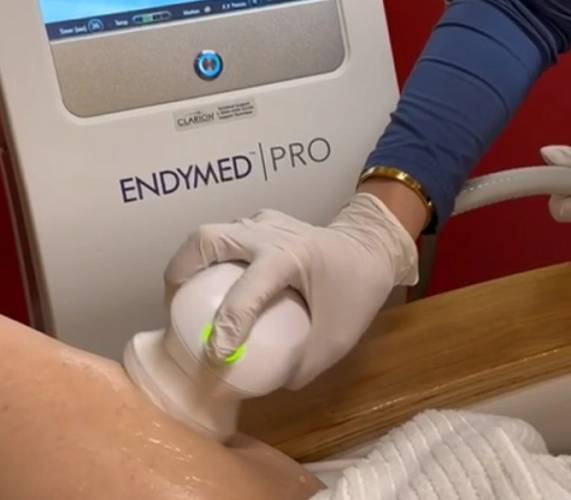Acne, Chicken Pox and Wound Scars
It can heal their wounds and pockets using a variety of instruments and procedures, ranging from the most basic—microneedling—to the most sophisticated—fractional and nano-fractional radiofrequency microneedling.
These scars include chicken pox and wound scar.
Thus, it is preferable to examine the different kinds of wound pockets in more detail:
Pockets of viral germs: like pimples, usually after their occurrence, a special type of acne pockets remain.
Pockets of calluses: when the skin is injured, calluses form on the wound. These types of pockets may remain for a long time and require treatment.
All these can be different depending on your skin condition and your budget. For example, if you want something simple, microneedling can be a suitable option. If you want to use the best and most advanced methods, you can refer to Fractional and Nano Fractional RF Microneedling methods.
It can used these with different devices such as:
Fractora Device
This gadget corrects the skin and configures skin tissues using a combination of radiofrequency and high-energy microscopic technology. Through the production of new tissue, this process improves the structure of the skin, strengthens it, and gets rid of scars.


Endymed device
This device uses radiofrequency technology to enhance skin tissue and remove scars. By delivering radiofrequency radiation to the skin’s tissue, this gadget encourages the skin’s natural synthesis of collagen and elastin, enhancing the skin’s hydration, regeneration, and structure.
Frequently Asked Questions
Yes, with advancements in dermatological treatments, scars resulting from acne, chicken pox, and wounds can be effectively treated. Technologies such as microneedling, fractional, and nanofractional treatments have shown significant success in reducing the appearance of these types of scars. The choice of treatment depends on the nature of the scar and the individual’s skin type.
Scar Formation Process
The scar will take a full six to eighteen months to fully emerge. Over the next six to eighteen months, your scar should progressively soften and fade; at first, it will seem pink (see photo B). Certain scars never go away. Please give us a call to explore your alternatives if, after 12 to 18 months, your scar remains pink.
It seems like scars deteriorate before they heal. Following surgery, the scar becomes red, firm, and rigid for around six weeks. This is how the body creates a very durable and substantial scar. In the upcoming four months, the scar will become less red and soften.
You might not get the desired outcomes from a laser treatment if the individual doing it lacks training in medicine and specific knowledge of the skin.
![All Beauty 03 [none LTD] 2 All Beauty 03 [none LTD] 2](https://allbeautylaser.ca/wp-content/uploads/2023/09/All-Beauty-03-none-LTD-2.png)
